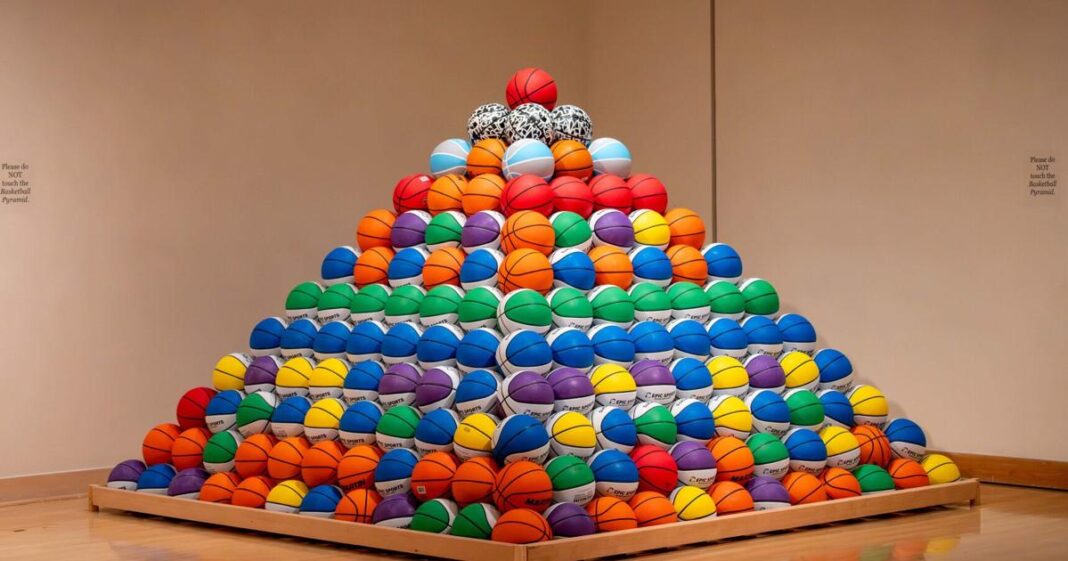Gonzaga University’s Joan Jundt Art Museum Celebrates African American Art
At Gonzaga University, the Joan Jundt Art Museum is currently highlighting a remarkable exhibition dedicated to contemporary works by prominent African American artists. This initiative is a timely response to the growing recognition of diverse voices within the art world. Paul Manoguerra, the museum’s director, shared insight into the exhibition’s focus, noting, “All of the artists in the exhibition are African Americans.” Many of these artists tie their artwork to personal identity, while others address broader societal themes, creating an enriching dialogue between the viewer and the work.
Curatorial Standards and Historical Importance
Manoguerra emphasized the careful selection process for the exhibition. To gain a spot in the museum, artworks must not only hold historical significance but also align with the university’s mission of education, research, and community service. Additionally, the chosen pieces must resonate with both students and faculty, ensuring that the exhibition is relevant and engaging for the university community.
A Traveling Exhibition
This particular collection stands out as a traveling exhibition organized by the Bedford Gallery in California. It embraces a wide range of artistic expressions, encapsulating the complex interplay between personal narratives and political messages. As Manoguerra explained, the artworks exemplify the intersectionality inherent in the experiences of African American artists, making a powerful statement that resonates with contemporary issues.
Representing Underrepresented Voices
The conversation about representation in art continues to evolve. Manoguerra outlined a critical question faced by curators: Should exhibitions focus solely on specific demographic groups—such as women or LGBTQ+ artists—or find ways to more inclusively represent these voices within the permanent collection? The museum strives for balance, ensuring that diverse artists receive recognition without segregating their contributions.
Limited Space and Meaningful Displays
Due to space constraints, the Joan Jundt Art Museum cannot maintain an extensive permanent collection of artworks. However, Manoguerra mentioned the Chancellor’s Room, which features an impressive semi-permanent display of glass sculptures. This curated approach allows the museum to rotate exhibitions and keep the experience fresh for returning visitors.
The Art of Printmaking
Currently on display in the museum’s main gallery are prints created by artists at the Paulson Fontaine Press in Berkeley, California. Over the last 25 years, master printers have invited numerous artists to develop their work in this collaborative studio environment. Manoguerra noted that some pieces were crafted by individual artists, while others came from collaborations among multiple creators.
A particularly engaging aspect of the exhibition is its inclusion of prints by women who traditionally identify as quilters rather than printmakers. Manoguerra explained that these artists were invited to translate their quilt designs into printed art, bridging the gap between two different but complementary craft traditions.
Featured Artwork: Basketball Pyramid
Among the standout pieces in this exhibition is a striking work by artist David Huffman. Initially, this piece did not include a visual element related to basketball, but the museum decided to enhance the exhibition by adding a pyramid comprised of basketballs. Manoguerra remarked, “It made sense to do it because we are a basketball school,” highlighting the institution’s cultural identity.
Engaging with Art Through Education
Vēta Schlimgen, an associate professor of history at Gonzaga, expressed her enthusiasm for the exhibition, noting its relevance to the African American History course she teaches. Schlimgen plans to bring her students to view the exhibit, particularly as they discuss the Harlem Renaissance. She believes that experiencing art firsthand enhances classroom discussions, providing a tangible connection to the historical narratives being studied.
The Importance of Context in Art Education
Schlimgen emphasized the significance of viewing art within an educational context. By integrating museum visits with university coursework, students can better appreciate the relevance of historical struggles in contemporary society. Manoguerra’s ability to provide depth and context enhances the experience, transforming a simple gallery visit into an engaging learning opportunity.
Art, particularly in the context of history classes, has the power to merge past and present, offering students a profound understanding of their studies. Schlimgen believes that such experiences help students recognize the ongoing impact of history in the world around them, creating lasting connections between their academic pursuits and real-life contexts.



